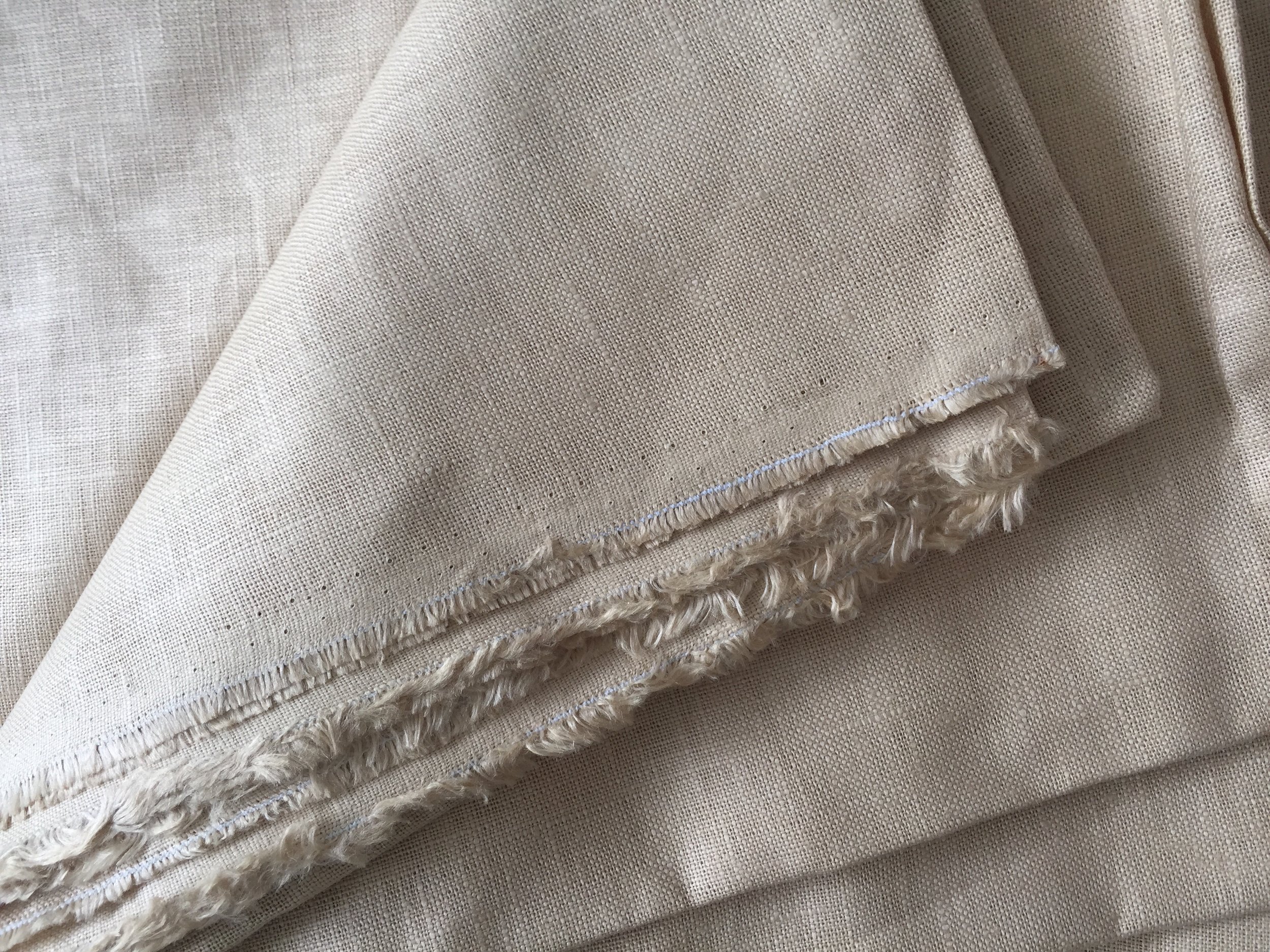“Does it crease?” asked a Skibbereen market goer as she considered the Sarah Shirt (above, optional tie belt not shown), in a tone that conveyed her hope that it didn't and her suspicion that it most probably did. Natural fibre fabrics pretty much have a tendency to crease, to show the place on the sleeve where your elbow bends or how sitting down results in folds to the back and front of your skirt, but I like that it shows the life you live and that you truly live in your clothes. Why do things have to be perfect? Why is it not acceptable to display that our bodies move and clothes take on our shape? I don't mind ironing and many garments do look better for an initial iron, but I'm not sure it's necessary to always have clothing starched and pristine.
Irish linen plays a core role in my collection due to it's history, low carbon footprint, ethical and ecological credentials, but ultimately I like the feel of wearing a garment made of linen, as do many others. It's cool to wear in the summer and warmer in the winter than you may think. I love the heritage of Irish linen and feel that I'm literally carrying a tradition as I wear garments made of Irish linen. Linen has good ecological credentials as the flax requires much less water to grow than say cotton and as it's grown in the EU it's produced to EU legislative regulations.
The experience of working with linen holds pleasures too, as the scissors cleave cleanly through the cloth when cutting our the pattern pieces. Whilst linen is a very structured weave, it's also surprisingly malleable, making it a dream to manipulate and sew.
On Phil Spencer's Stately Homes on Channel 4, he visits Chatsworth House in Derbyshire, England.
The Head Housekeeper shows him the linen table cloth in the Grand Dining Room (frustratingly, she didn't say it was Irish linen, but I think there's every likelihood it was). Table linen is one scenario where in my book at least, ironing has a place. The table seated around 40 guests and I don't know the length, but it touched the ground on either side of the table and was both wide and long. The incredible thing was that it had an embroidered cipher that included the date 1891, signifying the year it was woven. That's nearly 130 years of service!
My response to the 'does it crease' question was along the lines of 'absolutely'. The way linen behaves as a fabric may not be for everyone. In the early 20th century as 'modern' man-made fibres were introduced, one of the selling points of these synthetic, often petrochemical based fabrics, was that they didn't crease, making linen seem old fashioned and less desirable. When I began dressmaking in the 1980's, it was so out of favour that linen simply wasn't available in fabric shops, except for 'linen effect' made of synthetic fibre. Later, having overcome the conditioning of disliking creases and instead embracing them, the crumples, as I prefer to call them, are a part of the charm and character of of the extremely durable Irish linen.
Tip; After laundering, if possible, hang the garment on a hanger to dry in the open air and if the results are to your taste, you may find it doesn't need ironing at all.
Tamsin ✂️













